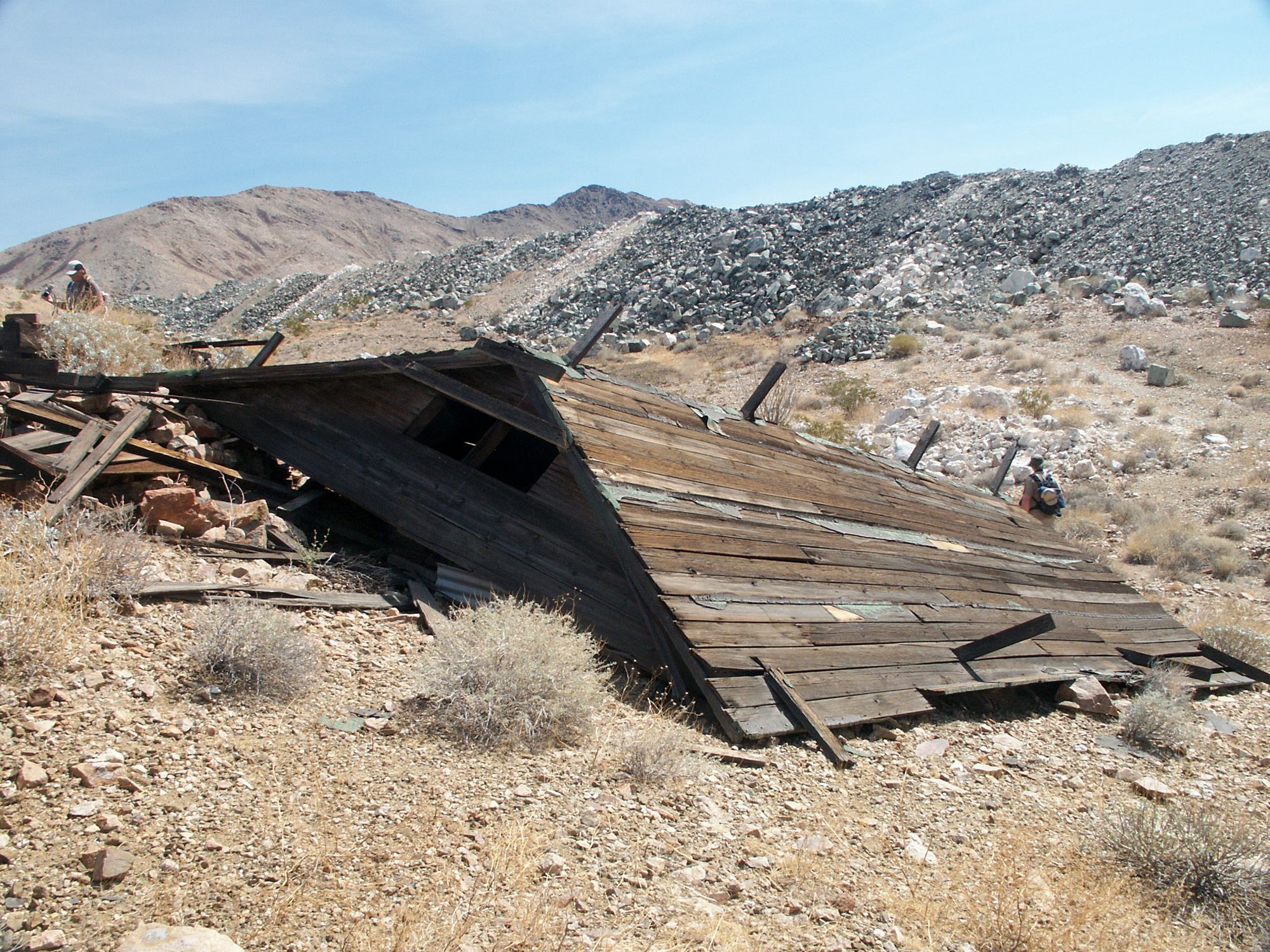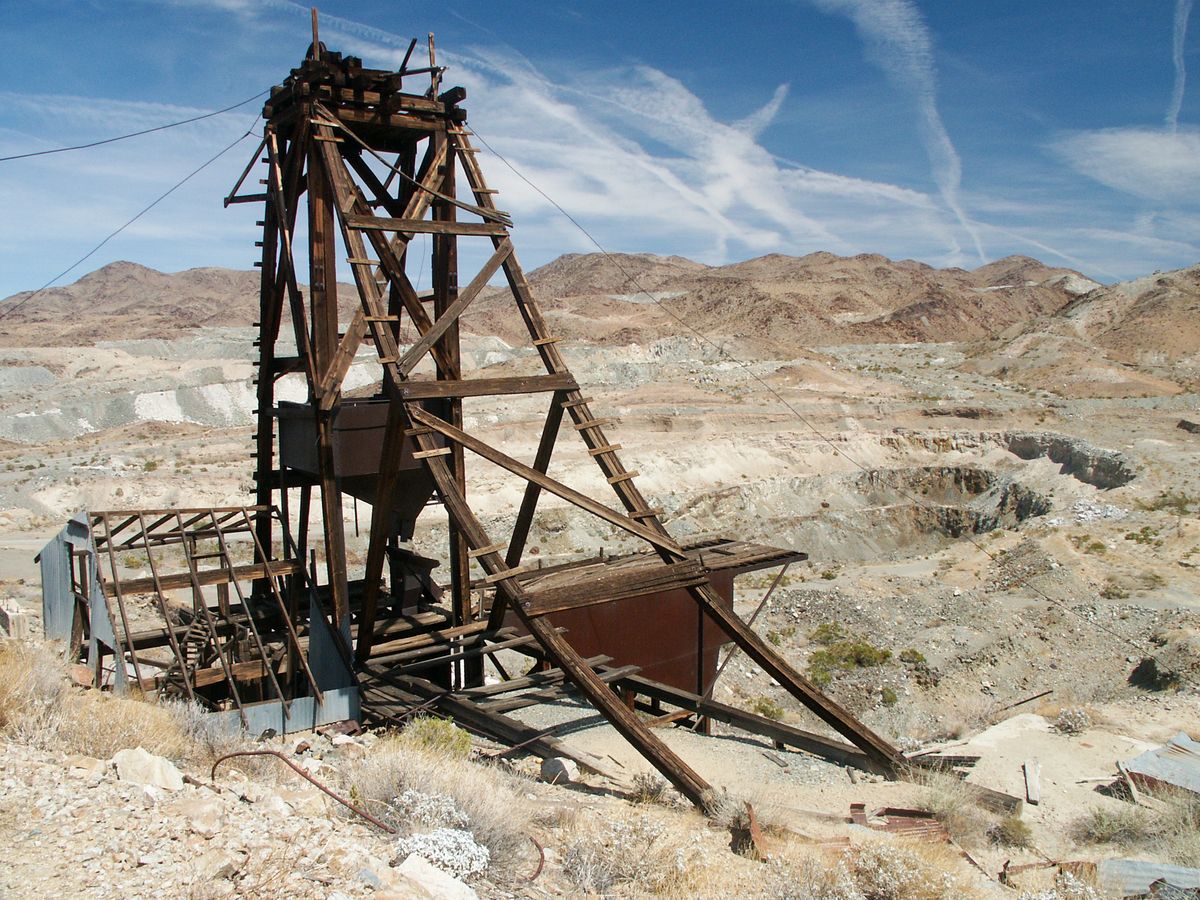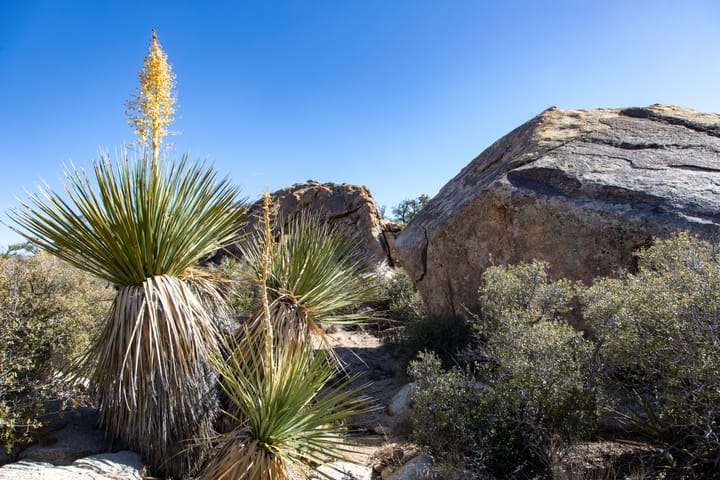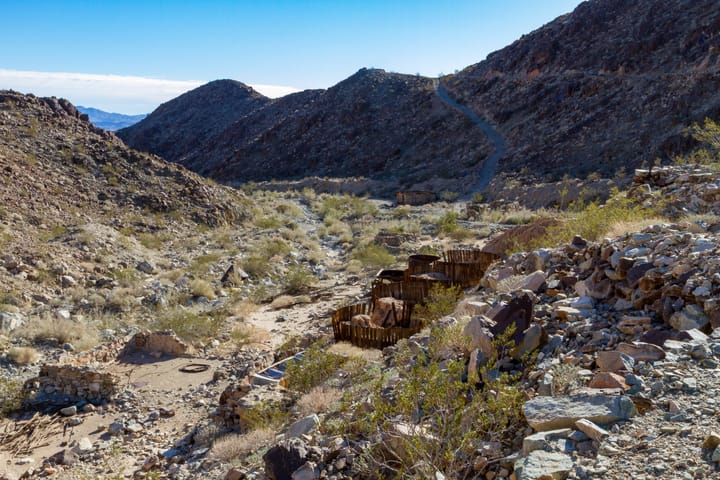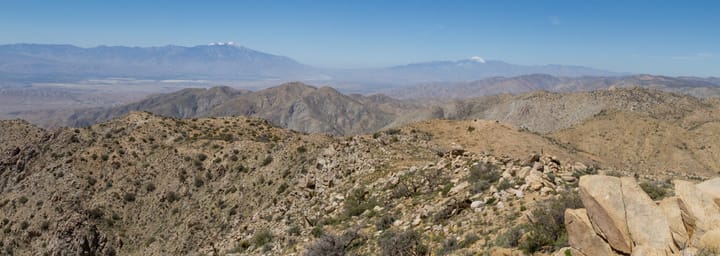Outside Joshua Tree National Park and deep within the stark Eagle Mountains, the crumbling Black Eagle Mine, surrounded by its massive neighbor, the Eagle Mountain Mine, is slowly fading into the desert. Its ruins are barely recognizable as the bustling operation they once were.
History
In 1898, a prospector named Rust first staked his claim. However, it wasn't until Edward Harmon relocated the mine in 1921 that things really got rolling. Over the next two decades, the Black Eagle would see periods of furious activity punctuated by stretches of quiet abandonment.
In its heyday, miners chased veins of gold, silver, lead, and copper through the mountain. They sank a shaft 650 feet into the earth, carving out levels every hundred feet or so. Up on the surface, they erected a small two-stamp mill to crush and process the ore. By 1929, this had been replaced with a 20-ton dry concentration plant featuring a Blake crusher, bucket elevators, a trommel screen, rolls, and two Cottrell tables. They even ran an ambitious 18-mile water pipeline from Cottonwood Springs all the way up to the mine.
The mine's fortunes ebbed and flowed with metal prices. Its most productive period came in the late 1930s when the Imperial Smelting & Refining Co. took over. They expanded operations, building a 150-ton concentration plant and employing up to 50 men. Things were going great; the company pulled out over $250,000 worth of ore in just three years.
But by 1940, the dream had faded. The company had sunk $750,000 into the mine to get that $250,000 out. They shuttered the operation, leaving behind only a watchman to guard the silent machinery.
Remarkably, when the massive Eagle Mountain Mine began operations nearby in 1948, it left the Black Eagle untouched. Today, the ruins stand like a historical island, surrounded by the bulldozed landscape and vast waste piles of its larger neighbor. This quirk of fate has preserved a unique window into the area's early mining history, making the Black Eagle a fascinating site to explore.
